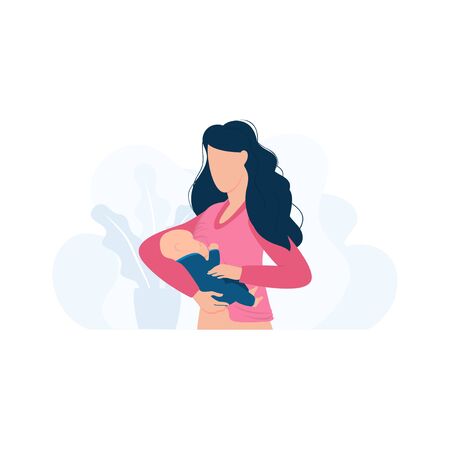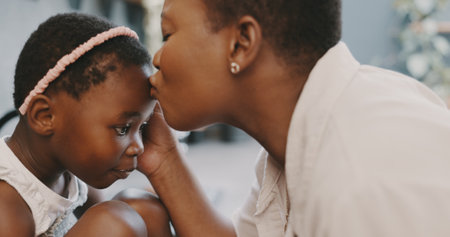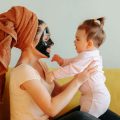Introduction to Baby Safety at Home
Ensuring the safety of babies in the home is a top priority for British families. According to the Royal Society for the Prevention of Accidents (RoSPA), accidental injuries are one of the leading causes of hospital admissions for children under five in the UK. Every year, thousands of infants are treated in A&E departments due to preventable accidents such as falls, burns, choking, and poisoning. The home environment, while familiar and comforting, presents various hazards for little ones who are naturally curious and eager to explore.
Common concerns among UK parents include ensuring stairways are securely gated, keeping cleaning products out of reach, and safeguarding sharp corners on furniture. Additionally, with many British homes featuring unique layouts or period features, adapting safety solutions can be particularly challenging. Awareness and preparation are crucial in minimising risks and providing a safe space for your baby to grow and develop.
| Common Home Hazards | Potential Risks |
|---|---|
| Stairs | Falls resulting in head injuries or broken bones |
| Cleaning Products | Poisoning from ingestion or skin contact |
| Hot Surfaces & Liquids | Burns and scalds |
| Cords & Small Objects | Choking or strangulation hazards |
| Sharp Corners | Cuts and bruises |
Being aware of these dangers and investing in essential baby safety products are the first steps towards protecting your child. In this guide, we will explore key safety items every British family should consider, helping you make informed choices to keep your little one safe at home.
Safe Sleep Solutions
Ensuring a safe sleep environment is one of the most important aspects of infant care for British families. The NHS and UK safety standards provide clear guidance on how to minimise risks such as Sudden Infant Death Syndrome (SIDS) and promote healthy sleep habits from day one. Below, we outline essential recommendations and products every parent should consider.
Creating a Safe Sleep Environment
According to NHS advice, babies should always be placed on their back to sleep, in a separate cot or Moses basket in the same room as their parents for at least the first six months. Avoid soft bedding, pillows, duvets, and cot bumpers as these can increase the risk of suffocation or overheating. Ensure that the baby’s head remains uncovered during sleep and keep the cot free from toys and loose blankets.
Choosing Suitable Mattresses
A firm, flat, waterproof mattress is vital for your babys cot. The mattress should fit snugly within the cot frame with no gaps larger than two fingers between the edge of the mattress and the cot sides. Old or second-hand mattresses are not recommended as they may not meet current safety standards or could harbour bacteria. Here’s a quick comparison of common mattress types:
| Mattress Type | Recommended? | Key Features |
|---|---|---|
| Pocket Sprung Mattress | Yes | Firm support, good airflow, durable |
| Foam Mattress | Yes (if firm) | Lightweight, affordable, ensure it is dense and supportive |
| Natural Fibre Mattress | Yes | Breatheable, eco-friendly, ensure firmness meets BS EN 16890:2017 standards |
| Second-Hand Mattress | No | Potential hygiene issues, may not comply with latest safety standards |
Recommended Sleep Products per UK Standards
The following products are recognised by UK authorities as promoting safer sleep:
- Cot/Moses Basket: Must conform to BS EN 716-1:2017 (cot) or BS EN 1466:2014 (Moses basket) standards.
- Sleep Sacks/Gro Bags: Approved wearable blankets reduce the risk of blankets covering babys face; ensure correct size for your baby’s weight and age.
- Room Thermometer: Maintaining a room temperature between 16–20°C helps prevent overheating.
- Baby Monitor: While not essential for safety if you’re in close proximity, monitors can offer peace of mind.
Key Takeaways for British Families
Selecting appropriate sleep solutions based on NHS guidance and British Standards will help safeguard your baby’s wellbeing. Always check product labels for relevant UK certifications and consult with your midwife or health visitor if unsure about any item used in your babys sleep environment.

3. Car Safety: Choosing Approved Car Seats
Ensuring your baby’s safety on the road is a top priority for all British families. In the UK, there are strict regulations regarding child car seats to protect young passengers from harm. It is a legal requirement for children to use an approved car seat until they are either 135cm tall or 12 years old, whichever comes first.
UK Car Seat Regulations
Car seats in the UK must conform to one of two standards: ECE R44/04 or i-Size (UN R129). The table below summarises these standards and their key features:
| Standard | Main Criteria | Key Features |
|---|---|---|
| ECE R44/04 | Weight-based groups (0, 0+, 1, 2, 3) | Covers babies from birth up to 36kg; rear-facing required for babies up to 9kg or more depending on the group |
| i-Size (UN R129) | Height-based (up to 105cm) | Enhanced side-impact protection; mandatory rear-facing travel up to 15 months; ISOFIX compatibility required |
Selecting the Right Car Seat for Your Baby
Choosing the correct car seat depends on your child’s age, weight, and height. Newborns and infants should always travel in a rear-facing seat for maximum protection. When purchasing a car seat, check that it is clearly labelled with either the ‘E’ mark (for ECE R44/04) or an i-Size label. Many British parents also find it helpful to seek guidance from retailers who offer fitting services.
Car Seat Types by Age & Size:
- Group 0/0+: Birth to 13kg (approx. 12-15 months) – Rear-facing infant carrier
- i-Size Infant: Birth to approx. 15 months (up to 85cm) – Rear-facing only
- Group 1/i-Size Toddler: Up to 18kg or 105cm – Forward or rear-facing options available after minimum age/size met
- Group 2/3/i-Size Child: Up to 36kg or 135cm – Booster seats for older children until seat belt fits properly without booster support
Proper Installation Tips
- Always follow manufacturer’s instructions specific to your car seat model.
- If using ISOFIX, ensure both connectors are securely attached and indicators show green.
- If using a seatbelt installation, make sure the belt runs through all designated points and is pulled tight with no slack.
- The harness should be snug, allowing no more than two fingers between your baby’s collarbone and the strap.
- Avoid bulky clothing that may affect harness fit and effectiveness.
- Your baby’s head should be at least 2.5cm below the top of the car seat when rear-facing.
- If in doubt, many local councils and retailers offer free car seat checks for peace of mind.
Remember:
An incorrectly fitted car seat can significantly reduce its protective benefits. Take time to check your installation regularly as your baby grows or if you move the seat between vehicles.
4. Home Proofing Must-Haves
Ensuring your home is safe for a new baby requires careful planning and the right equipment, especially in British homes where features such as narrow staircases, fireplaces, and older cabinetry are common. Here are the key products every British family should consider for effective baby-proofing:
Essential Baby-Proofing Products
| Product | Main Use | Tips for British Homes |
|---|---|---|
| Stair Gates | Prevents falls on stairs and restricts access to hazardous areas | Pressure-fit gates suit rental properties; measure for narrow or carpeted stairs typical in UK homes |
| Cupboard Locks | Keeps cleaning products and sharp items out of reach | Magnetic locks work well on older wooden cabinets found in many British kitchens |
| Fireguards | Protects babies from open fires and hot surfaces | Essential in homes with traditional fireplaces; choose sturdy, fixed guards that can’t be pulled over easily |
| Corner Protectors | Cushions sharp edges of tables and furniture | Select clear, adhesive protectors that blend with classic UK décor styles |
Choosing the Right Products for Your Home
British homes often feature unique layouts and period details. When selecting safety products, opt for adjustable fittings and check compatibility with your doors, skirting boards, and banisters. Always follow manufacturer instructions and test installations regularly.
Pro Tip:
If you live in rented accommodation, choose non-permanent options like pressure-mounted stair gates and adhesive cupboard locks to avoid damaging property.
5. Bath and Water Safety Essentials
Bath time is a special bonding moment for families, but it also comes with potential risks, especially for young babies. British families should be aware of the essential safety products and best practices to ensure their babys well-being in the bathroom. Following UK safety guidelines, here are recommended items and tips to keep your little one safe during every bath.
Recommended Bath Seats and Supports
Bath seats and supports can help stabilise your baby during baths, reducing the risk of slips or sudden movements. The following table highlights key features to look for when choosing a suitable product:
| Product Type | Recommended Features | UK Safety Guidance |
|---|---|---|
| Baby Bath Seat | Non-slip base, secure suction pads, supportive backrest | Always supervise; never leave baby unattended |
| Bath Support | Ergonomic design, quick-drying material, appropriate size for age/weight | Use only in shallow water (max 5cm for newborns) |
Thermometers: Ensuring Safe Water Temperature
The ideal bath water temperature for babies is around 37–38°C. Using a reliable bath thermometer is vital to avoid burns or chilling. Opt for digital thermometers with clear readings, and always test the water with your elbow before placing your baby in the bath. Avoid relying solely on touch, as adults may not accurately gauge temperature.
Tips for Preventing Accidents During Bath Time
- Never leave your baby unattended, even for a moment.
- Prepare everything you need before starting the bath (towel, soap, clothes).
- Keep electrical items away from the bath area.
- Avoid overfilling the tub; shallow water is safest.
- Ensure all toiletries are out of baby’s reach.
- If using a family bathtub, fit anti-slip mats to prevent accidents.
- Always empty the bath immediately after use.
Reference: UK Bathroom Safety Standards
The Royal Society for the Prevention of Accidents (RoSPA) recommends constant supervision and using approved products that meet British safety standards (BS EN 17072:2018). Always check labels and user instructions before purchase and use. By following these guidelines and investing in suitable bath safety essentials, British families can create a secure and enjoyable environment for their babies during every bath time.
6. Monitoring and First Aid Readiness
Ensuring your baby’s safety extends beyond physical barriers and childproofing; it also involves vigilant monitoring and preparedness for emergencies. British families are increasingly relying on baby monitors and comprehensive first aid kits to provide peace of mind and quick responses in critical moments. Below, we offer guidance on selecting the right products and maintaining essential first aid knowledge tailored for infants.
Choosing the Right Baby Monitor
Modern baby monitors come with a range of features designed to suit different family needs. When choosing a monitor, consider your home size, WiFi reliability, and privacy concerns. In the UK, both audio-only and video monitors are popular, with some offering additional features like temperature sensors or movement detection.
| Feature | Audio Monitor | Video Monitor |
|---|---|---|
| Cost | Generally lower | Higher due to camera technology |
| Privacy | No video data transmission | Secure connection recommended (encrypted WiFi) |
| Range | Sufficient for most UK homes | Slightly reduced if using WiFi only |
| Extra Functions | Basic sound alerts | Temperature, movement, night vision, two-way talk |
Tip:
Select a monitor certified to UK electrical standards (BS EN 60065 or similar) for safety and reliability.
First Aid Kit Essentials for British Households
A well-stocked first aid kit is vital in any home with an infant. Regularly check expiry dates and replenish supplies after use. The NHS recommends that every household keeps the following items specifically for babies:
| Item | Purpose |
|---|---|
| Sterile gauze pads & dressings | Covers minor cuts or grazes |
| Adhesive tape & plasters (hypoallergenic) | Secures dressings safely on delicate skin |
| Infant paracetamol suspension (calpol) | Pain relief/fever management – dosage as per GP advice |
| Nasal aspirator | Eases congestion in small infants who can’t blow their nose |
| Thermometer (digital) | Accurate measurement of baby’s temperature |
Tip:
Create a reminder every three months to review your first aid kit contents.
Learning Basic Infant First Aid Skills
Bristish Red Cross, St John Ambulance, and NHS resources all offer parent-friendly courses on basic first aid for infants. Key skills include responding to choking, infant CPR, treating burns/scalds, and managing allergic reactions. Many local councils run free workshops, so enquire at your nearest children’s centre or GP surgery.
Main Points to Remember:
- Keep emergency numbers (like NHS 111) visible near your phone.
- Add a paediatric first aid course to your antenatal preparations.
- If unsure during an emergency, always seek immediate professional help.
By investing in reliable monitoring devices and staying prepared with up-to-date first aid kits and training, British families can create a safer environment for their little ones throughout the early years.


